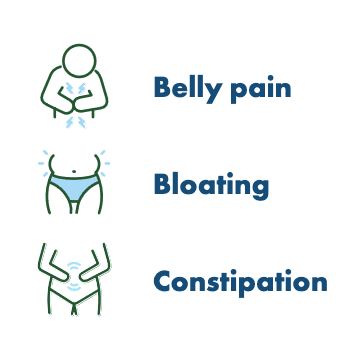5 Tips for Navigating Life with an Ostomy
An ostomy bag is a pouch on the outside of the body that’s used to collect stool or urine. In this article, we are going to focus on living with a stool-collecting ostomy, with the most common types being colostomies and ileostomies.
Living with an ostomy bag can disrupt your daily routine and it presents a variety of new challenges. While it will take some time to get used to, there are ways to make living with an ostomy much easier.
1. Get your ostomy changing routine down
While your ostomy nurse should have provided you with detailed instructions about changing your ostomy bag, it can still be challenging to nail down your routine.
Ostomy bags are typically changed twice per week, but may need to be changed more or less frequently.
It’s recommended that you change your ostomy bag after showering and on an empty stomach. Before you change your ostomy bag, set out all the materials you need and prepare your new pouch.
See this video for a detailed demonstration of a two-piece ostomy bag change (WARNING: the person’s stoma is shown in the video).
2. Learn how to empty your ostomy bag
Emptying your ostomy bag may feel very strange at first, but it will become second-nature overtime.
A good rule of thumb is to empty your ostomy bag before doing activities and before going to bed. It’s also important to empty your ostomy bag when it is 1/3 to 1/2 full of discharge or gas.
You do not need to rinse your pouch after emptying it. If you are concerned about the odor, you can use a lubricating pouch deodorant.
This video explains how to empty an ostomy bag and gives a demonstration of the different positions people use when emptying their bags.
3. Plan for traveling with an ostomy bag
If you have a digestive condition that used to limit your ability to travel, a stoma may have given you the freedom you have been waiting for. But before you go jetting around the world, don’t forget to plan for your ostomy.
It’s a good idea to bring all of your ostomy supplies in your carry-on bag when flying. Remember that you are not allowed to bring scissors in your carry-on bag unless you have a special medical note. Instead of going through the hassle of getting approval, try pre-cutting your skin barriers while packing for your trip. Don’t forget to bring extra supplies!
4. Join an ostomy support group
Having an ostomy can feel isolating. Your family and friends may be supportive, but they do not have first-hand knowledge about what you are going through. One way to connect with others who understand your struggle is by joining an ostomy support group.
If you are not able to find an in-person group, you can also find a community online.
5. Talk to your partner about your ostomy
If you have a spouse or significant other, they may not understand what an ostomy is or how it impacts your daily life. Including them in the discussions leading up to your stoma surgery will help remove the mystery and give them a chance to be a support system for you.
If you already have an ostomy and are concerned about sharing this info with future romantic partners, this article provides tips for navigating intimacy when you have an ostomy.
While navigating life with an ostomy can feel overwhelming at times, having a solid ostomy care plan and seeking support can make it much easier. If you have further questions about caring for your ostomy, please speak to your doctor or ostomy nurse.
Katelyn Collins, RD is a registered dietitian specializing in irritable bowel syndrome (IBS) and digestive health. Katelyn’s personal experience with IBS first sparked her passion for nutrition and health. Since then, she has been a vocal advocate for the digestive health community and has dedicated her own nutrition practice to serving those with digestive conditions.

Listen to our
latest Podcast!







